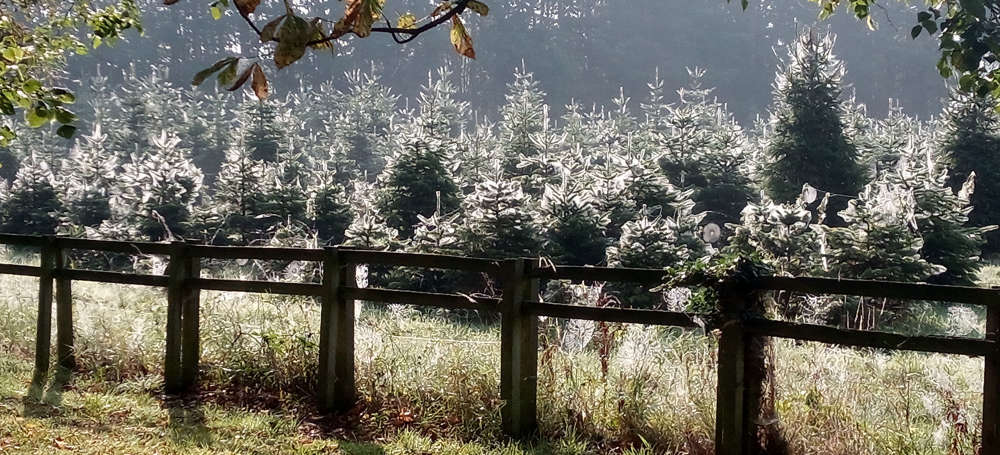
York Christmas Trees, the award winning local family owned growers in Wigginton, has taken part in new research which shows real Christmas trees provide a brilliant habitat for wildlife including endangered birds.
York Christmas Trees, the award winning local family owned growers in Wigginton, has taken part in new research which shows real Christmas trees provide a brilliant habitat for wildlife including endangered birds. www.yorkchrismtastrees.co.uk
The study was funded by the British Christmas Tree Growers Association (BCTGA) and was carried out over five months, led by researcher Colin Palmer who surveyed wildlife in 19 plantations from Devon to Yorkshire with assistance from experts at Harper Adams University and Newcastle University. It identified 40 different types of birds and, significantly, 13 were endangered red or amber listed species. Red or amber listings categorises their need of help: red being urgent and amber of moderate concern.
The study of York Christmas Trees fields at Wigginton found 22 different variety of birds and a host of insects plus three roe deer. Oliver Combe, owner of York Christmas Trees, has been delighted with results which confirms the positive benefits of growing real trees.
He explained: “We are absolutely delighted that the study identified 22 different types of birds at our Wigginton sites as it confirms that the Christmas trees fields are home to a wide variety of insects that attract the bird life. As well as the official list of birds found in Wigginton, we have spotted a Canada Goose, Kestrel, Tawny Owl, Green Woodpecker, Lesser Spotted Woodpecker, Fieldfare and Mistle Thrush while working on the growing sites.
“The aim of the survey was to show the trees provide a good environment for wildlife and going forward we intend to conduct a survey of the insect life and the soil fauna to show how diverse the environment is around growing Christmas trees. We use a ‘circle of life’ approach with the trees we grow being recycled after Christmas, chipped and then put back into the fields to provide a habitat for insects and to help with the growth of the trees which take 10 years to reach an average height of 6 foot. Every year we plant around 20,000 new trees which continually replenishes the Christmas tree fields ”.
The study is believed to be the first focussing on UK Christmasa trees and found mammals including bats, mice, red squirrels, deer, foxes and badgers present in grower’s plantations. During the night, numerous ground beetles also rove under the Christmas trees, while 60 different species of colourful moths flew above them.
The BCTGA also commissioned a separate survey conducted by Ipsos to find out how many households bought a real Christmas tree and the reasons why in 2021. The survey found that more than 8 million real Christmas trees were sold and the main reason for getting a real Christmas tree was the smell and tradition.
Heather Parry ,BCTGA Managing Agent ,said: “We commissioned both the study and the survey to find how important Christmas trees are to the environment and to the consumer. They show that real Christmas trees positively contribute to the environment as well as providing a wonderful habitat for wildlife, as well as being a popular choice for millions of households in the UK.”



 ‘Darkest Hour’ star Gary Oldman is coming to York!
‘Darkest Hour’ star Gary Oldman is coming to York!